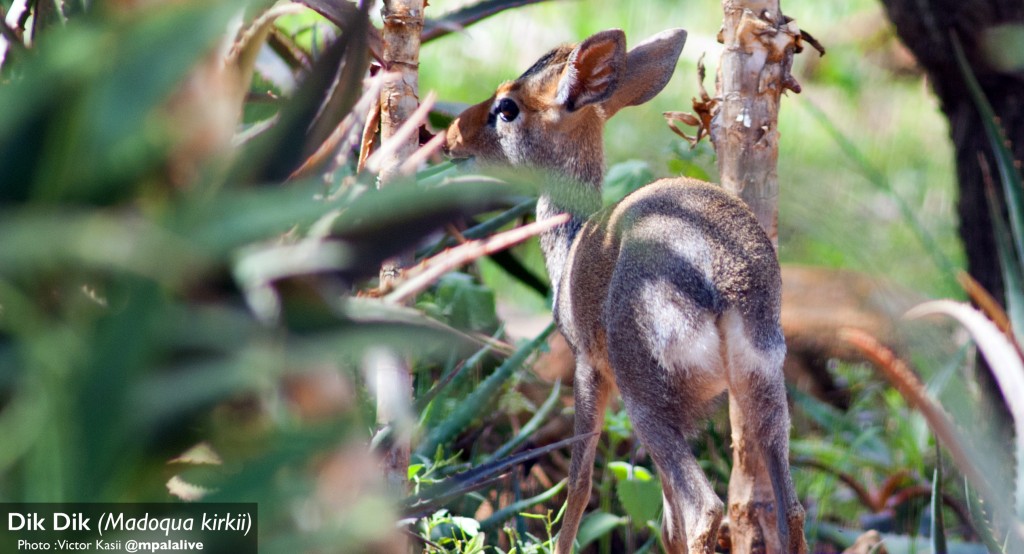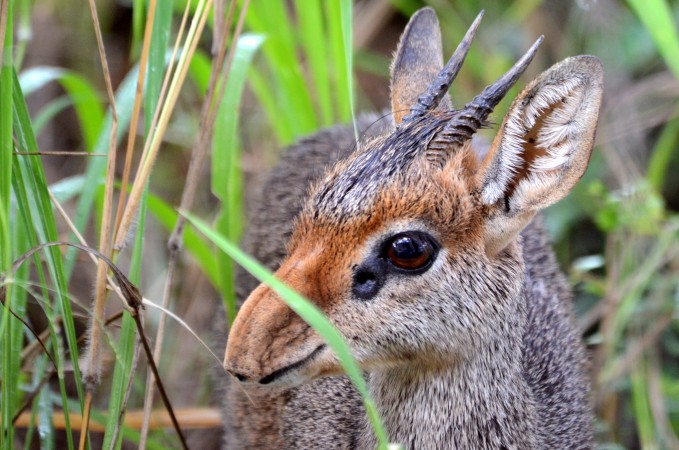Dik-diks are a common and pleasant sight at Mpala. From the office block to the thick bush around and on live cameras at Explore.org, dik-dik couples can be seen quietly chewing on a variety of plants. Dik-diks are browsers, feeding on a diet consistently high in fermentable and digestible plant material. The adorable couples are famous for sticking together for life–called pair-bonding. They have only one offspring at a time. Upon maturity, the young one leaves the parents to join another dik-dik, form a couple, and find new territory.
Dik-diks are territorial. They mark their space with teary secretions from a dark gland found under the eye. The teary secretions are applied on twigs and grass as a means of communication with other dik-diks. Males have sharp horns measuring about 3 inches(7.5cm) with which they defend territories. They also mark their area with urine and dung.
Recently at Mpala, a limping dik-dik was spotted crisscrossing the grounds with what appeared to be a broken rear right foot. This lucky miniature antelope must have survived the jaws of a predator. A dik-dik’s small size makes it vulnerable to attacks by leopards, cheetahs, jackals, as well as monitor lizards. And researchers at Mpala have found that a pack of wild dogs kills about seven dik-diks each week, or about one a day. For a few weeks and until the limp was gone, this dik-dik stayed close to the Mpala office block.
In a state of panic, dik-diks produce a shrill whistling sound and run in a zig-zag format at high speeds, reaching up to 26mph (41kph). The female’s danger signal (“zik-zik” or “dik-dik,” from which their name is derived) warn other species that it’s time to flee.
We hope to see more dik-dik couples and families in February and beyond. Viewers on Explore.org have take some great snapshots of these pint-size ungulates. If you’re on the lookout for them check out the area around some of the larger mammals like elephants and kudu. Dik-diks can not reach a lot of browse but they know to simply wait for their tall friends to break off branches and leaves.
Peace,
Victor Kasii @mpalalive





